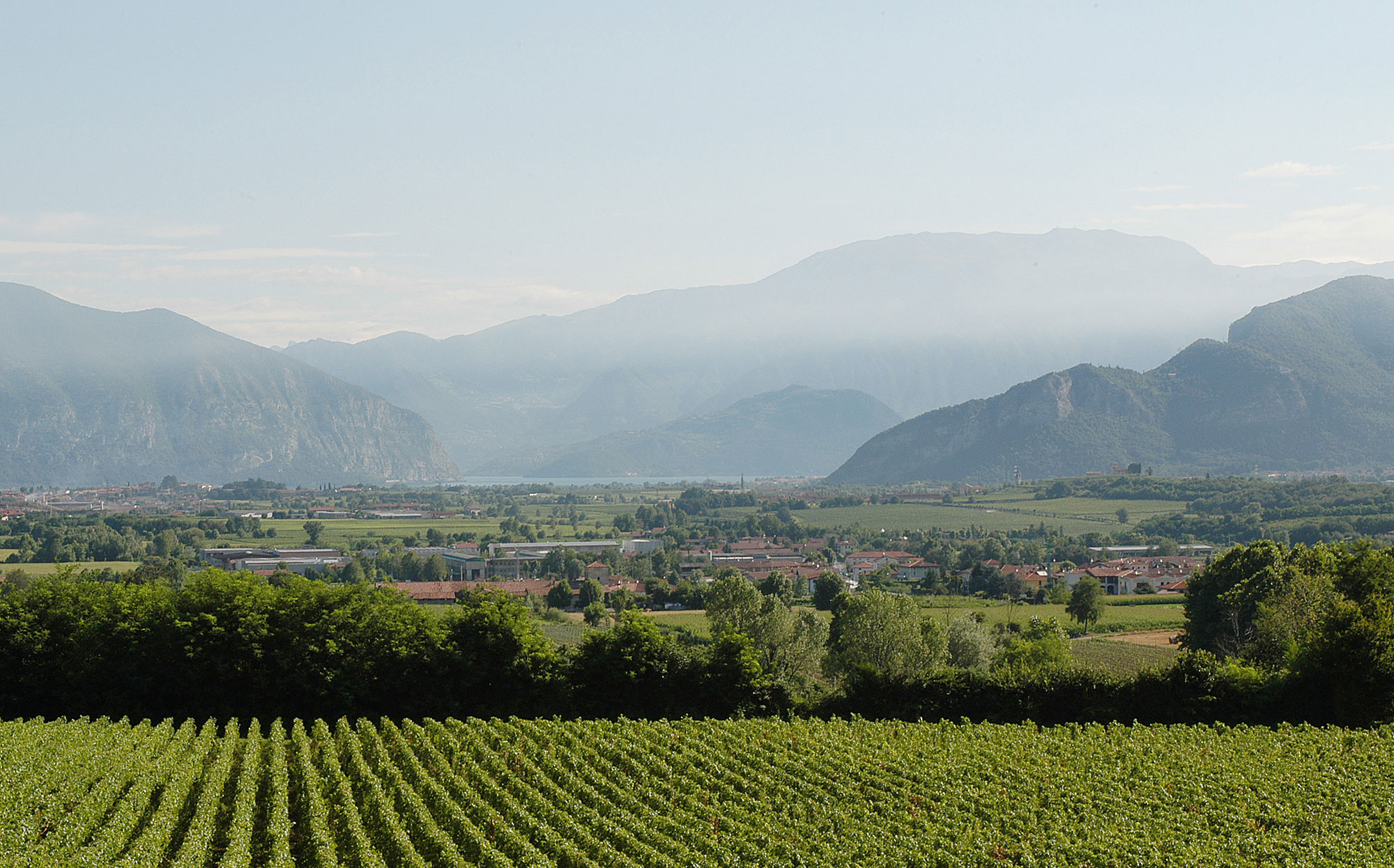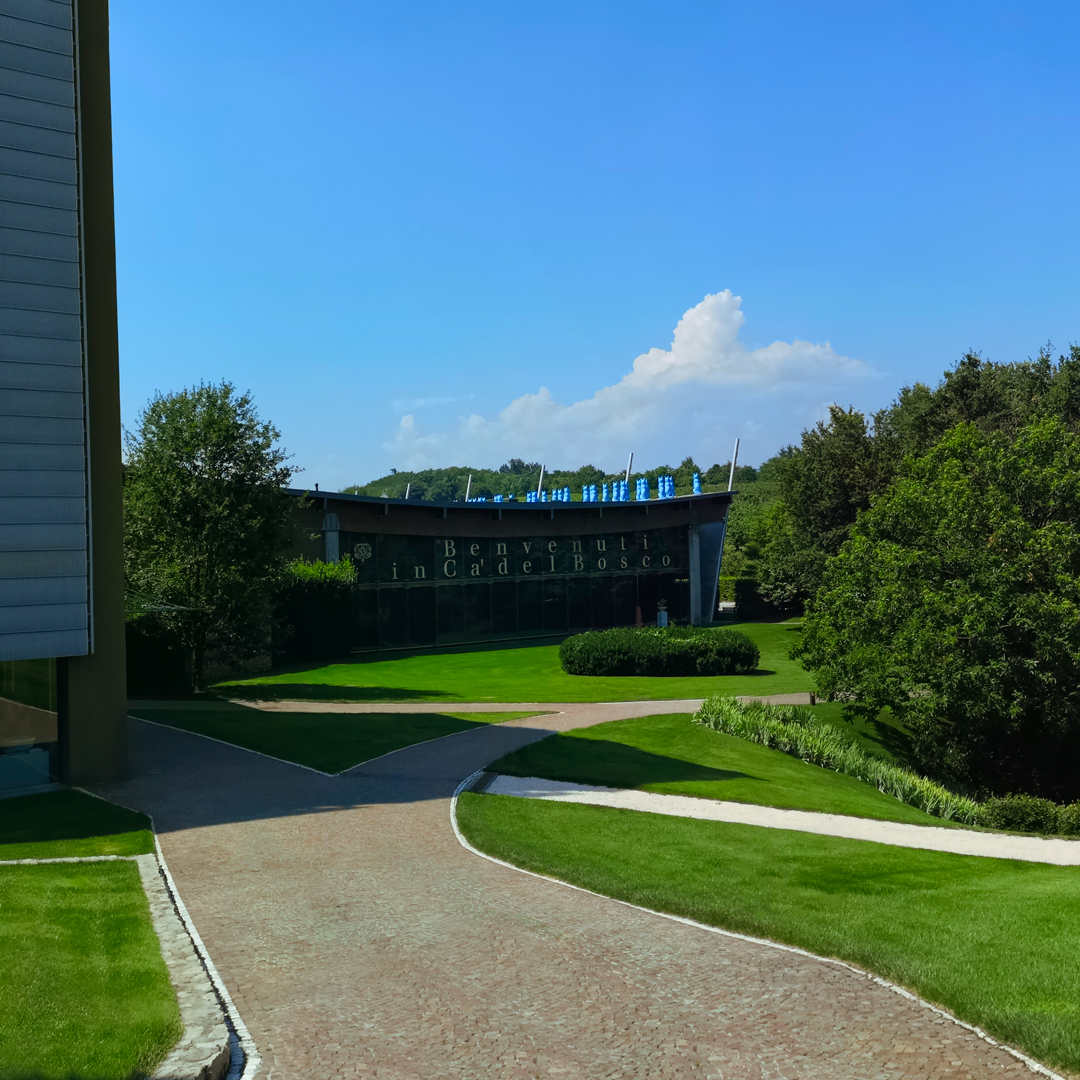WORDS
Jane Fulcher
A few years ago if you asked for a glass of Franciacorta in London you’d probably be greeted with a blank stare. And a few years before that even in Rome or Naples, a request for a glass of Franciacorta might be received quizzically. In fact, according to Maurizio Zanella, the charismatic creator of Franciacorta’s biggest wine producer, Ca’ del Bosco, Italians would even raise an eyebrow at any wine being produced in Lombardy, the northern region of Italy from which Franciacorta hails.
But now the sparkling wine is growing in popularity in and outside of Italy – gaining a loyal following for its smooth texture, refreshing and refined taste and easy pairing with food. Ca’ del Bosco is the biggest Franciacorta producer in the region and has played a key part in raising the sparkling wine to international prominence.

The winery dates back to the mid 1960s, when Zanella’s mother bought a small homestead farm with a house in the woods – the “Ca’ del bosco” from which the name of the winery originates. After getting in trouble at school – riling his classmates and teachers by claiming to be a communist at a posh private school and then a fascist at a socialist state school – he was sent by his parents to live first in Manchester to work on the docks and then at the family farm. Zanella’s rebellious spirit, however, continued to thrive – and thank goodness it did. It was on a wine-growers’ trip from Lombardy to France that he took to escape school and find Paris that Zanella came across the wines of storied cellars, including Domaine de la Romanée-Conti, and bought some bottles with his last lira to bring back to Italy along with a dream to set up a vineyard.
Ca’ del Bosco released its first wine, Bianco di Franciacorta, in 1972, and the first red wine, Rosso di Franciacorta, in 1977. The first sparkling variety was released in 1976 with the help of chef de cave, André Dubois, recruited by Zanella to work at Ca’ del Bosco from Moet & Chandon on a trip to Champagne and the expert who introduced metodo classico to the winery’s production.

Since then, Franciacorta and Ca’ del Bosco have gone from strength to strength under meticulous conditions. Franciacorta became a DOC in 1967, which included red and white wines, and, in 1995, a DOCG for the region’s sparkling wines, which stipulates that the wine must be crafted from chardonnay, pinot nero and pinot bianco grapes with no irrigation or chemical fertilisers allowed. As a result, most Franciacorta vineyards are organic.
Sustainability is at the heart of much of Franciacorta production, as the encroaching effects of climate change have led to a change in regulation allowing for the inclusion of erbamat grapes in the sparkling wine’s production. These grapes, which are native to the area of Brescia and Lake Iseo from where Franciacorta hails, are more suited to growing in the region and provide a fresher, sharper flavour profile. Ca’ del Bosco is yet to include erbamat in its production of Franciacorta, but like all producers, it is keenly aware of the challenges of keeping a sparkling wine house consistent as temperatures rise.
Imagination, adaptability and innovation are at the heart of everything this storied but relatively young wine producer does. What other world-beating winery is still run by its founder who isn’t yet 70 years old? Appropriately, the winery, which can be visited by the public year round, is adorned with artworks picked by Zanella. Large-scale sculptures including a rhinoceros (Il Peso Del Tempo Sospeso by Stefano Bombardieri) hanging from the ceiling at the entrance of the cellar represents patience; the golden gate, Cancello Solare by Arnaldo Pomodoro, which marks the entrance of Ca’ del Bosco, was so unusual and revolutionary in its aesthetic that it took five years for local authorities to approve it. On cresting the hill on the way to the winery a pack of blue wolves, the Blue Guardians by Cracking Art, crafted from recycled plastic, stare benevolently at visitors, reminding them of the area’s past as a woodland.

Of the wines, the most prized are the Annamaria Clementi. Named after Zanella’s mother, they are the most prestigious of the Ca’ del Bosco collection. In 2019, Ca’ del Bosco won Best Italian Sparkling Wine at the Champagne & Sparkling Wine World Championships for its Annamaria Clementi 2009. And Ca’ del Bosco to date has won 44 “Tre Bicchieri” awards from Gambero Rosso’s Vini d’Italia. The wines are rich and fresh and pair perfectly with food – from rich pastas to delicate fish.
The other Franciacortas in the collection include a Vintage Collection Satèn – made from chardonnay and pinot bianco, satèn is the blancs-des-blancs of Franciacorta, known for its smoothness and creaminess (satèn means silk in Italian), the Vintage Collection Extra Brut, Dosage Zéro and Dosage Zéro Noir (made from 100% pinot nero). Franciacorta’s southern location relative to Champagne means that the dosage is kept to a minimum and in these vintages little or no sugar is added before corking at all, resulting in wine of extraordinary zippy freshness. The Ca’ del Bosco Cuvée Prestige Edizione and Cuvée Prestige Rosé Edizione are the entry-level wines in the collection, both eminently drinkable and elevated.

Ca’ del Bosco’s still wines include a chardonnay, chardonnay and pinot bianco blend, merlot, pinot nero, carménerè, the Maurizio Zanella: a blend of cabernet sauvignon, merlot and cabernet franc, and Corte del Lupo Rosso blend of merlot, cabernet sauvignon, cabernet franc and carménère. Although a small percentage of the winery’s output, its still wines are as respected and beautifully crafted as its sparkling vintages.
Currently around 20 per cent of Franciacorta is exported outside of Italy, to the US, Japan, UK, Germany and beyond, and this is partly limited by consumers’ reluctance to pay champagne prices for other sparkling wines. But with the trend for dry, low-dosage sparkling wines continuing and the blooming interest in English sparkling wines opening UK oenophiles’ minds away from champagne, Franciacorta’s star can only be rising in this country and beyond.





